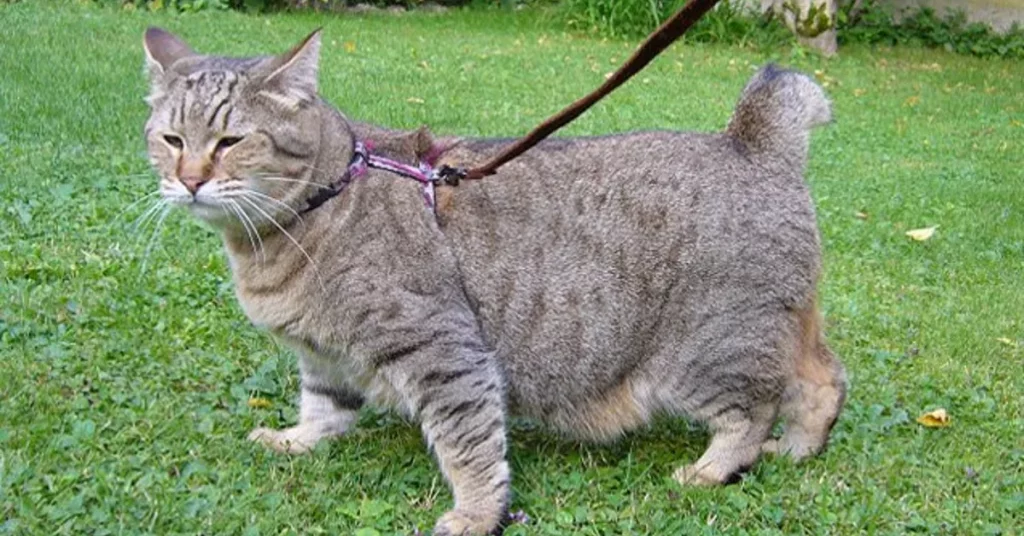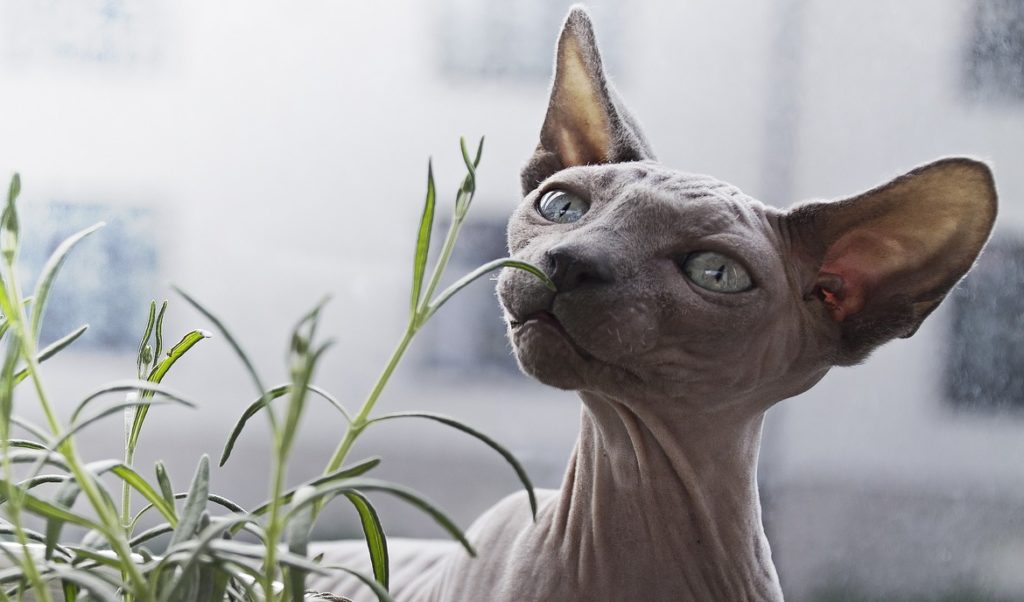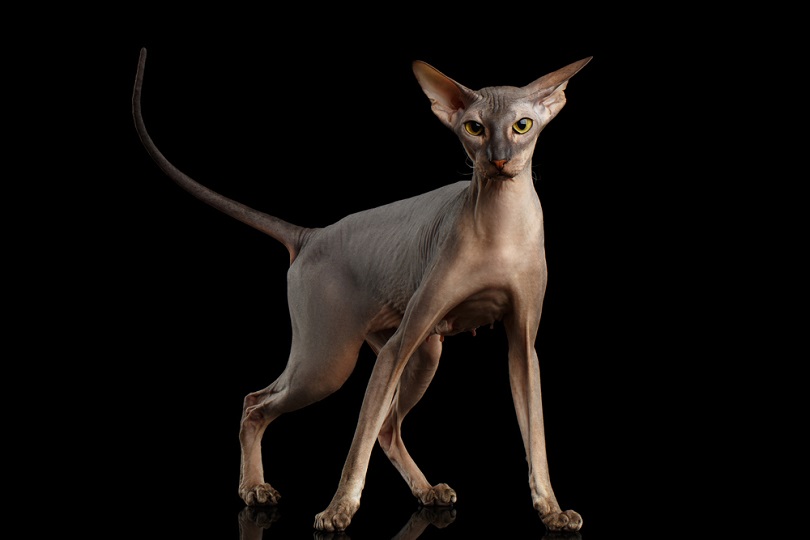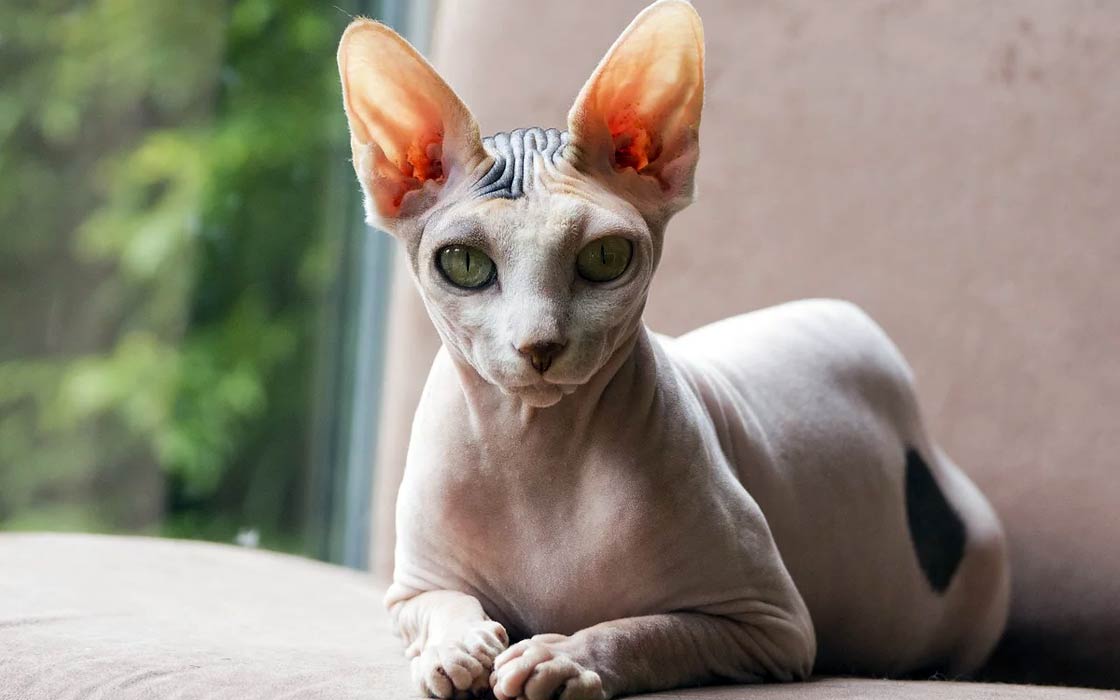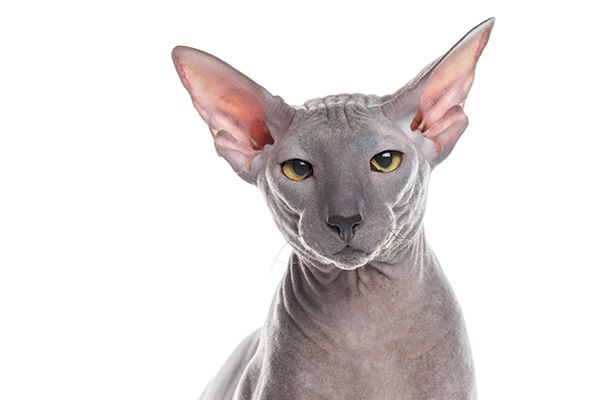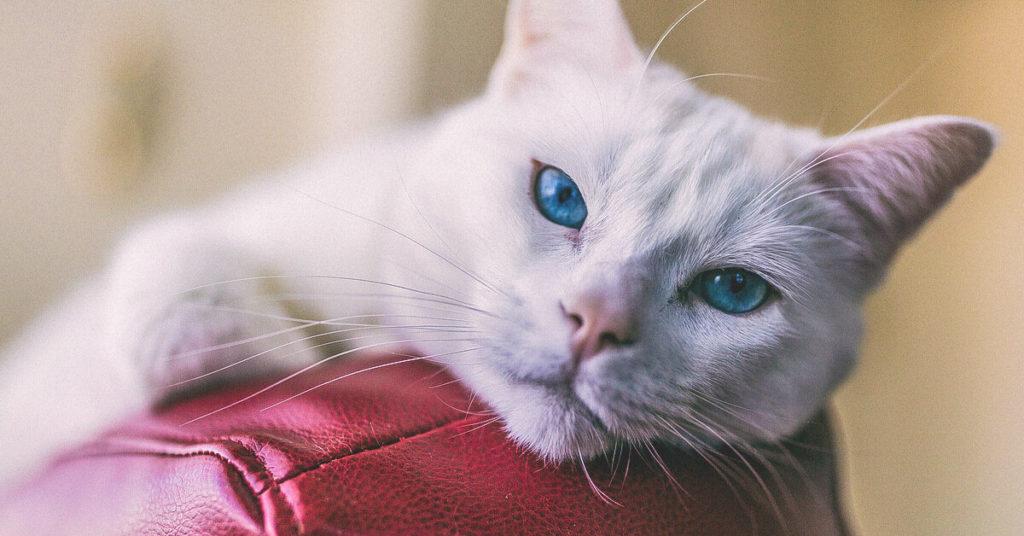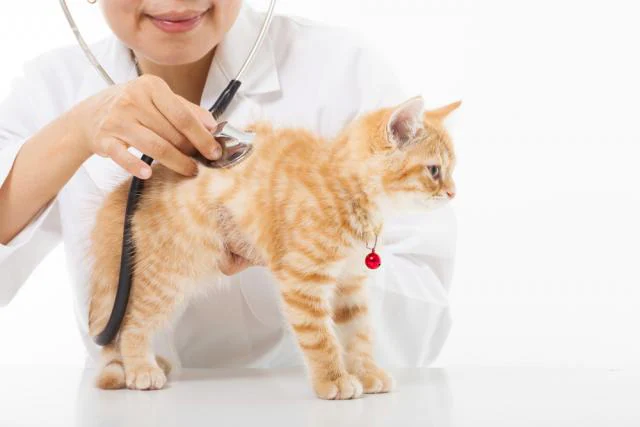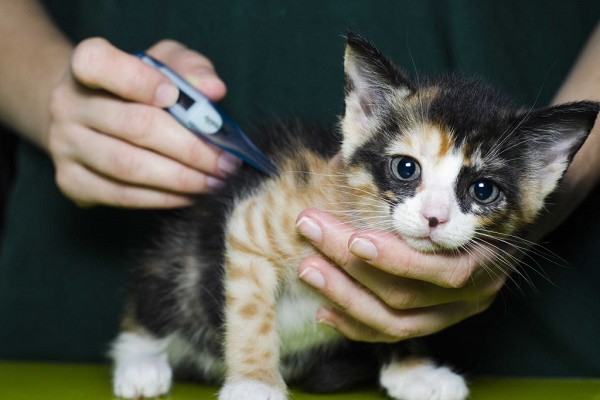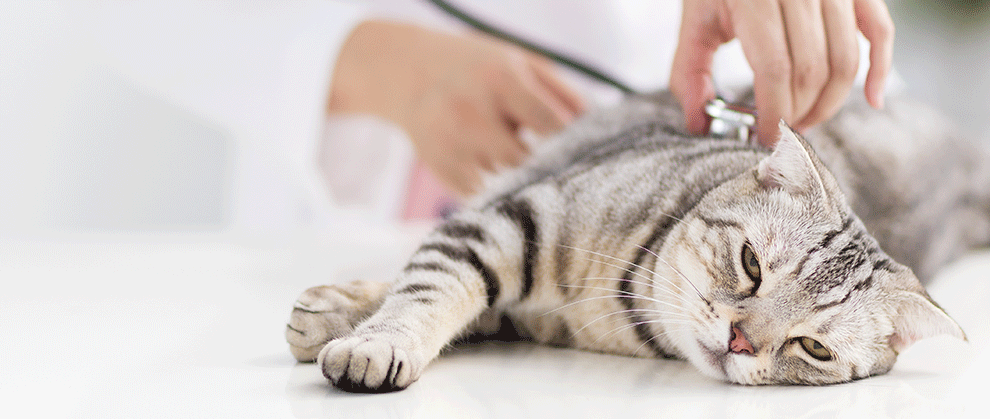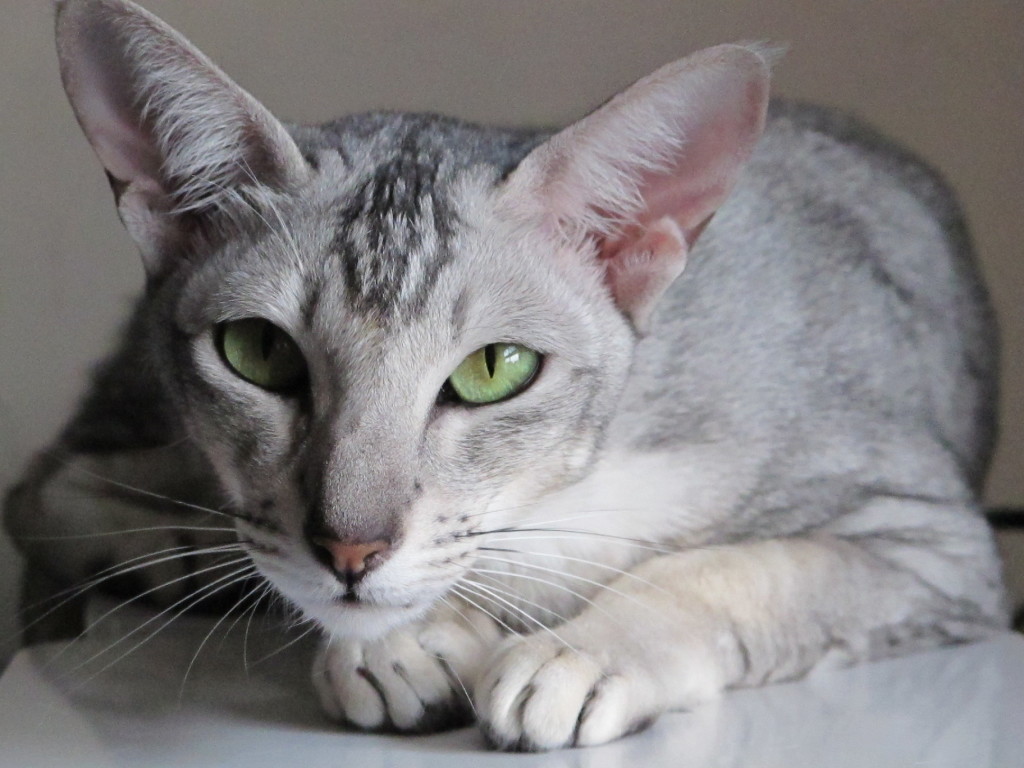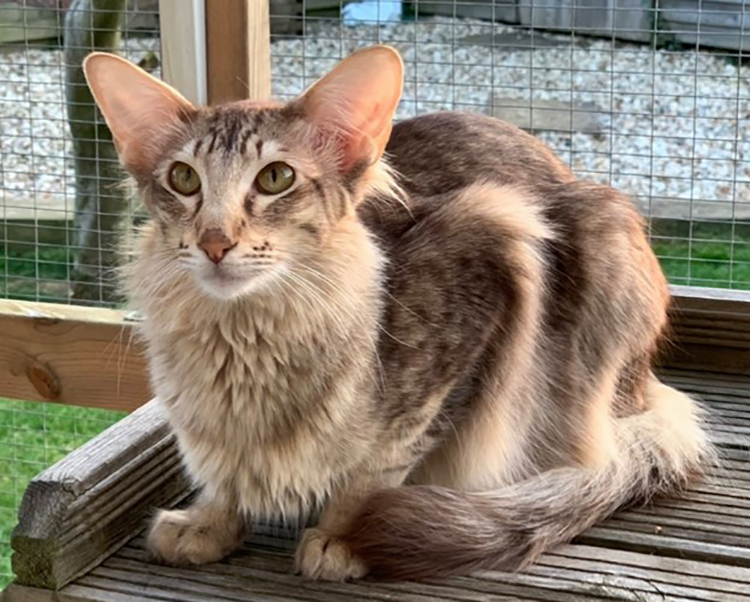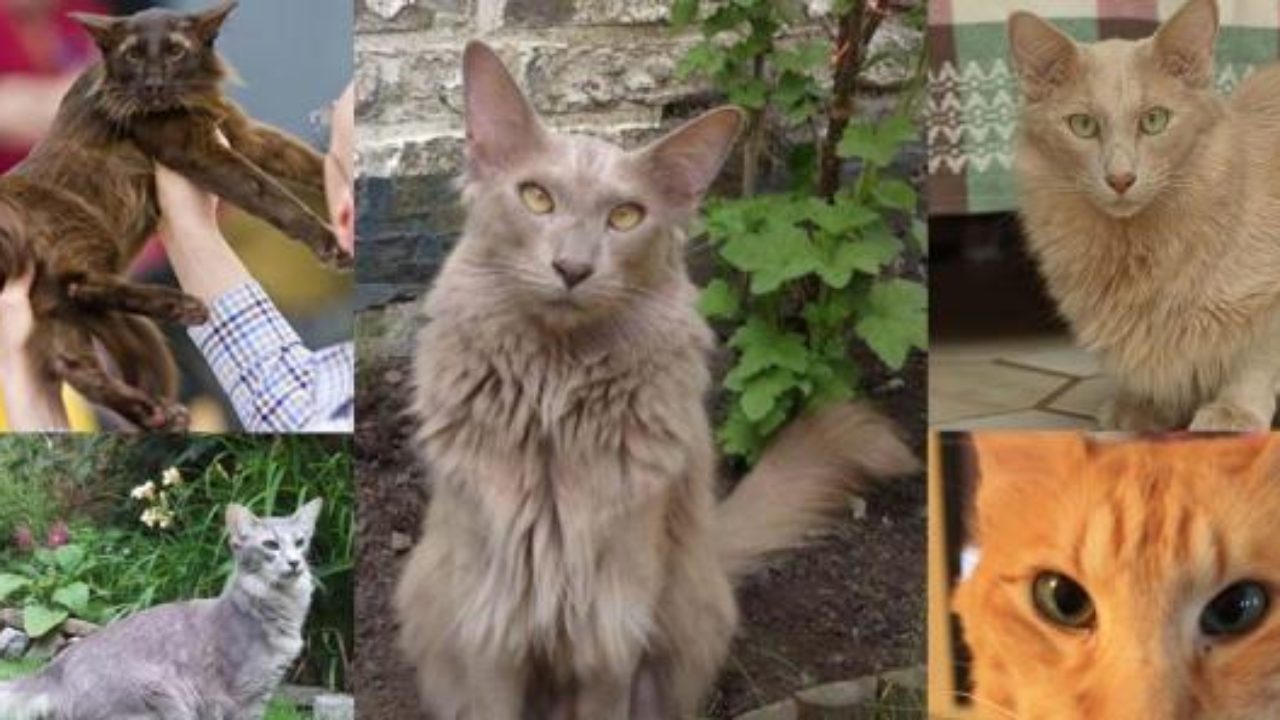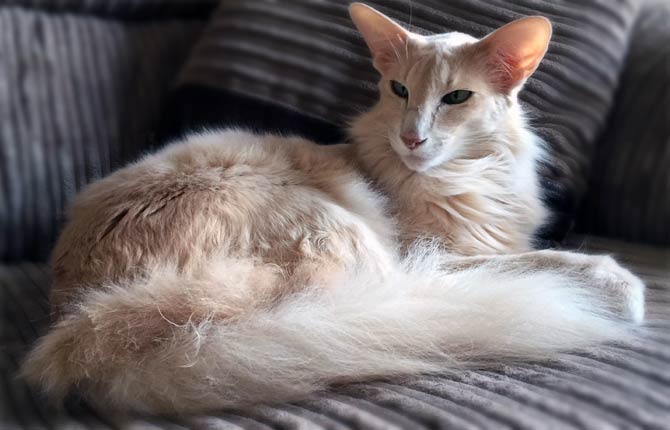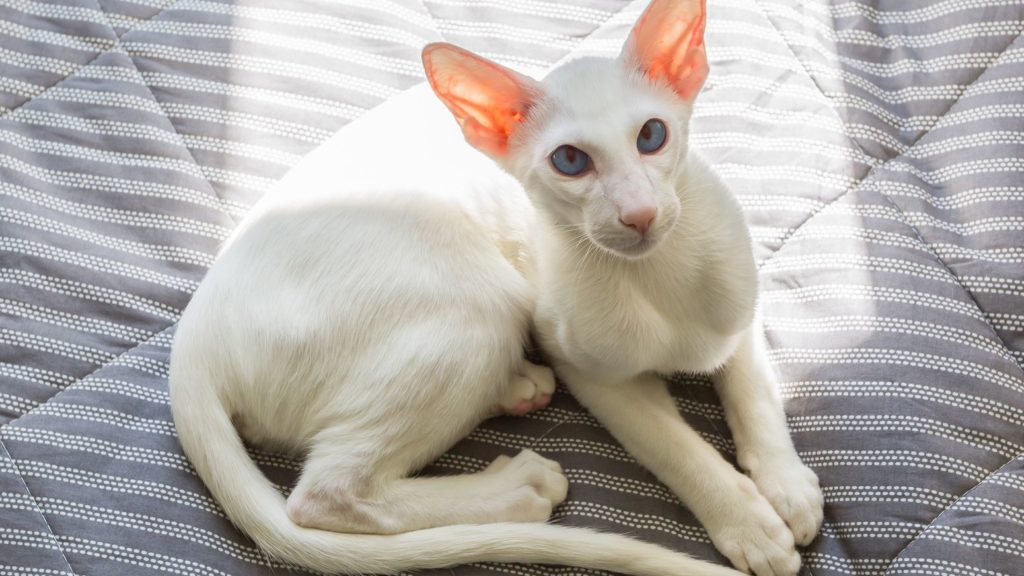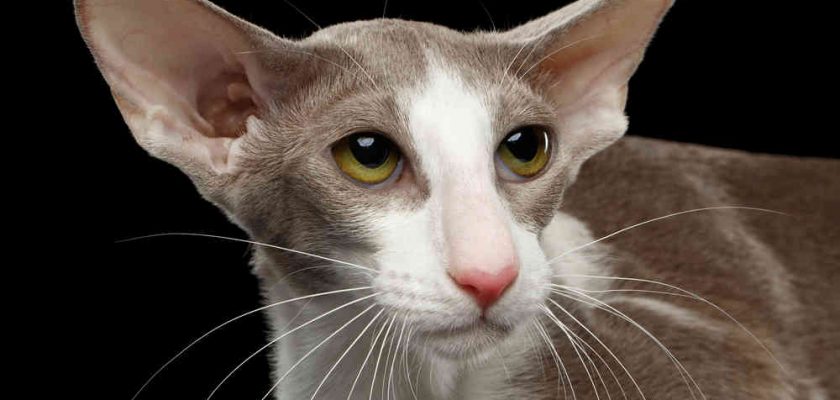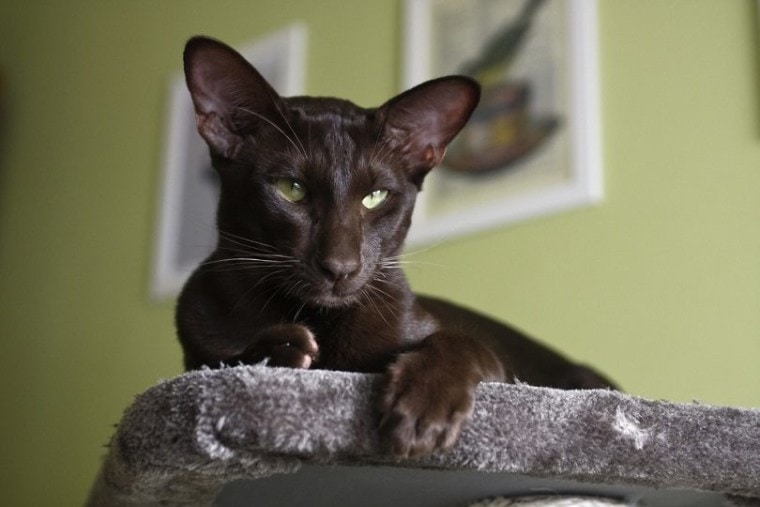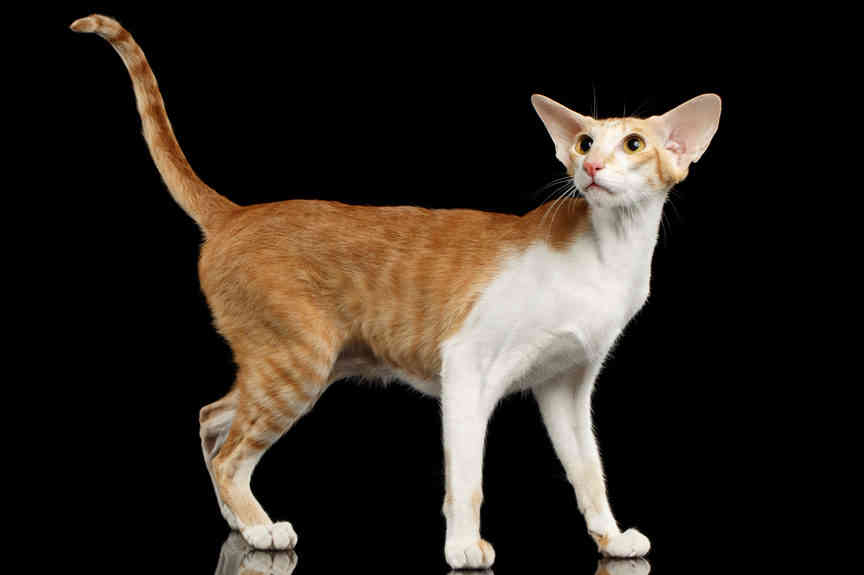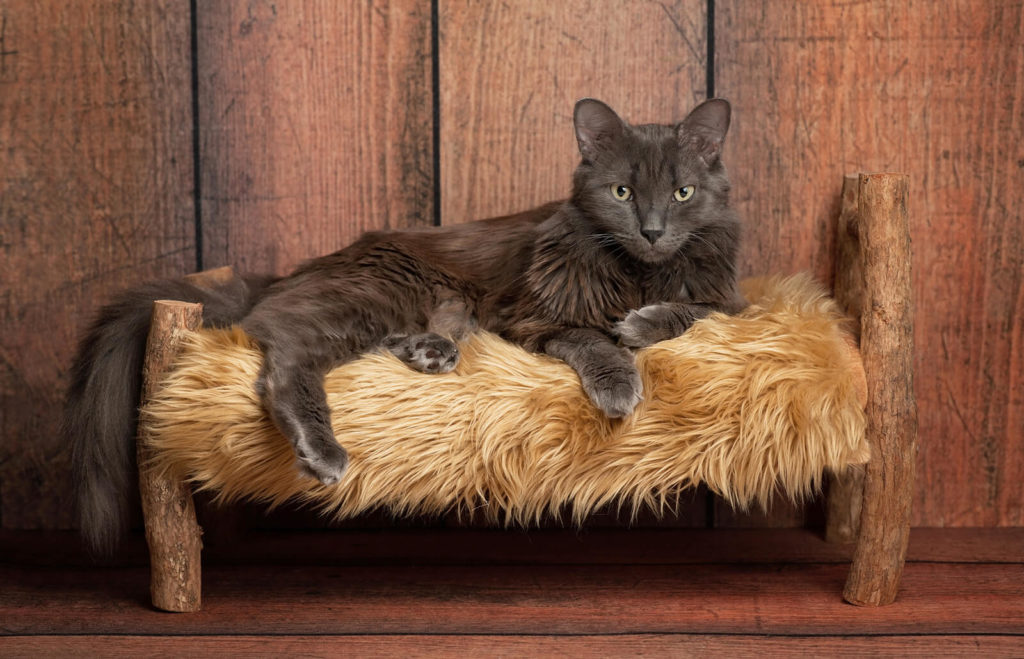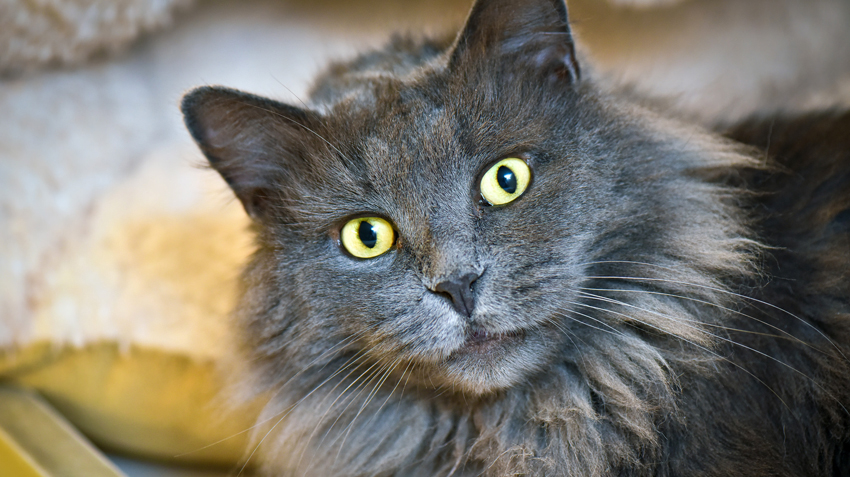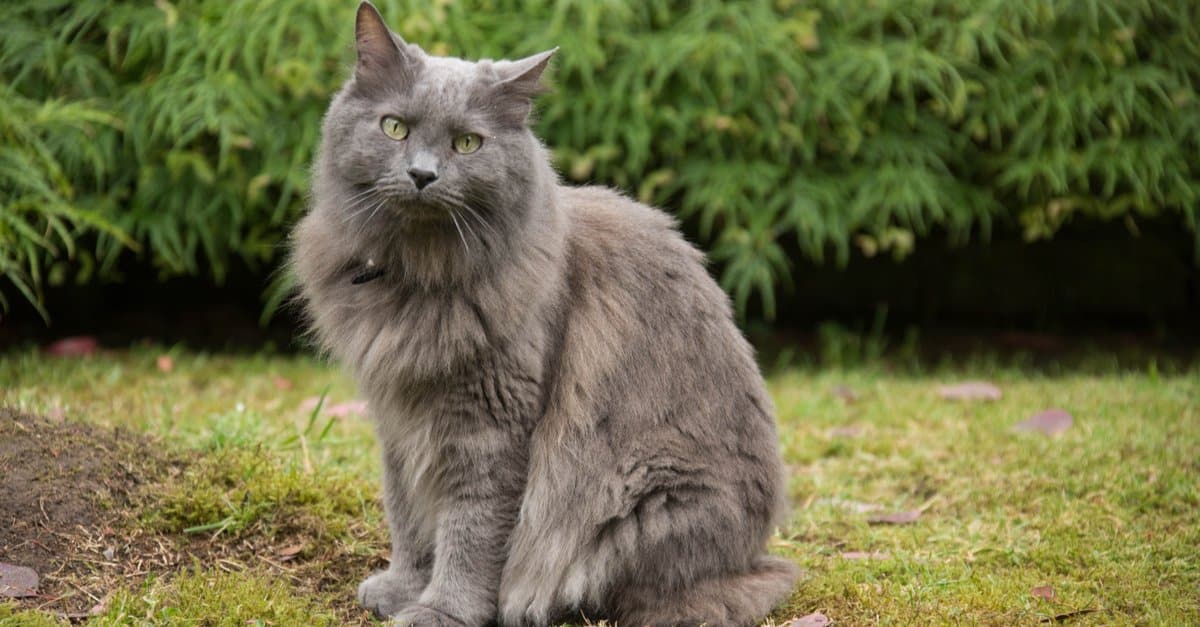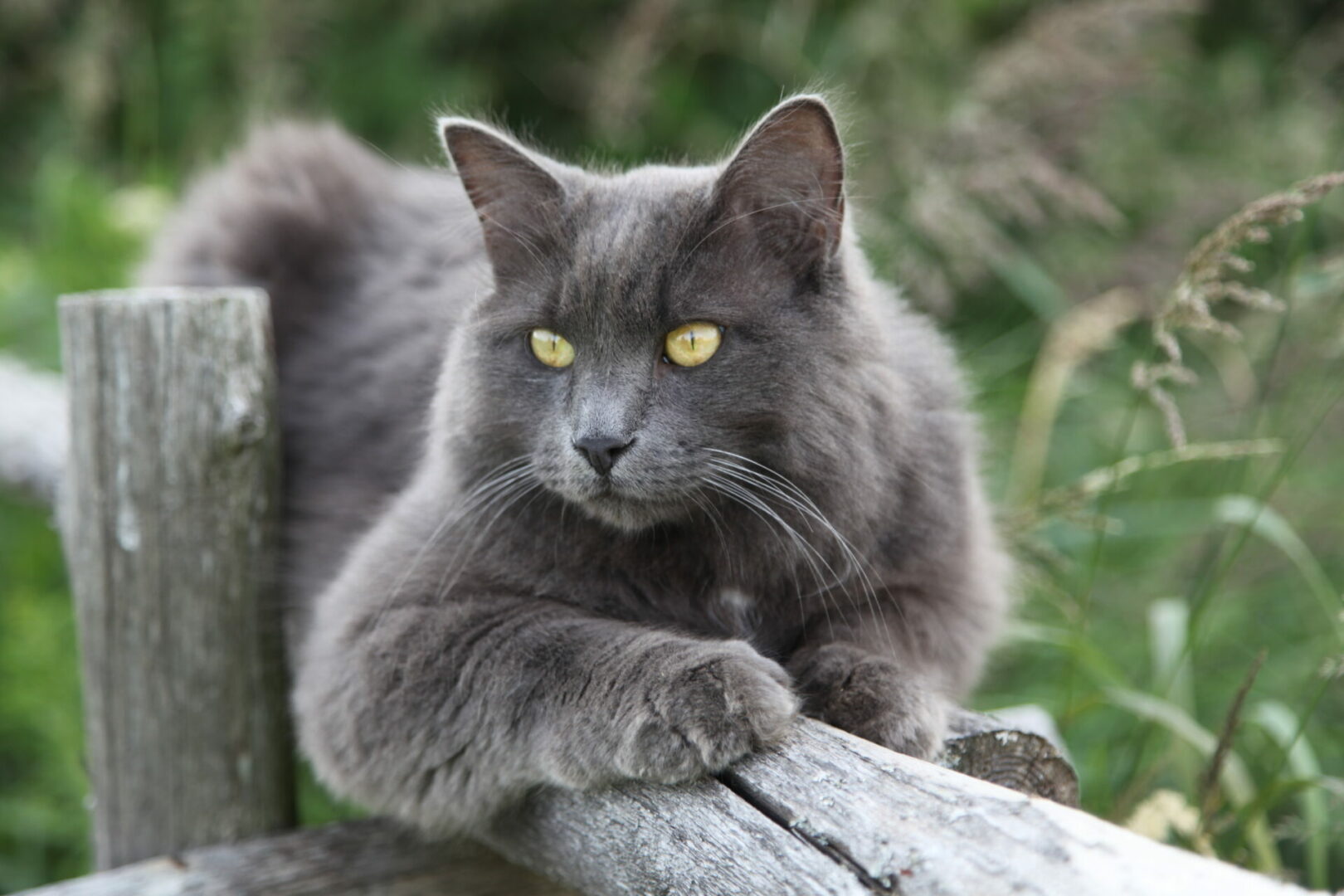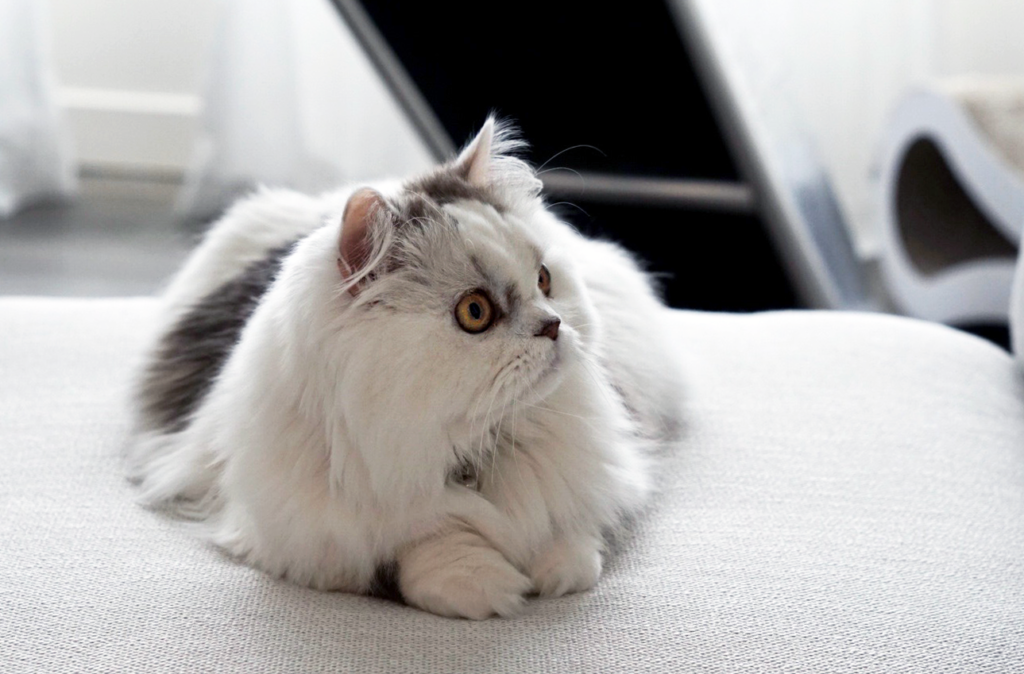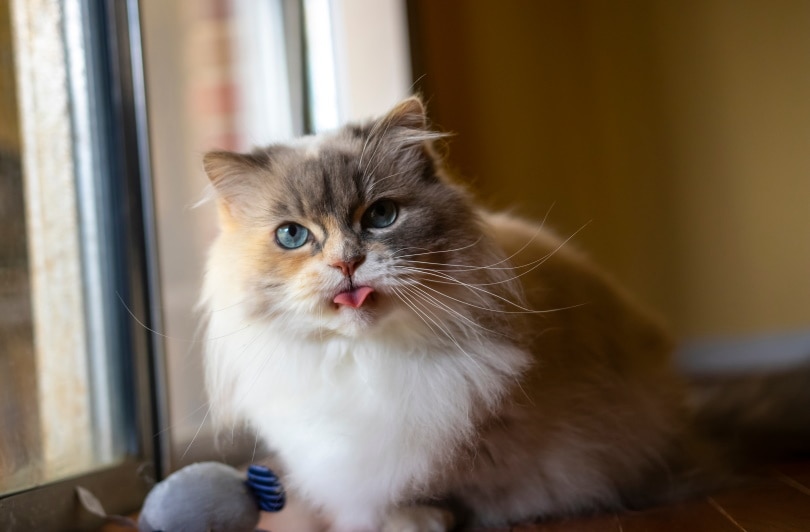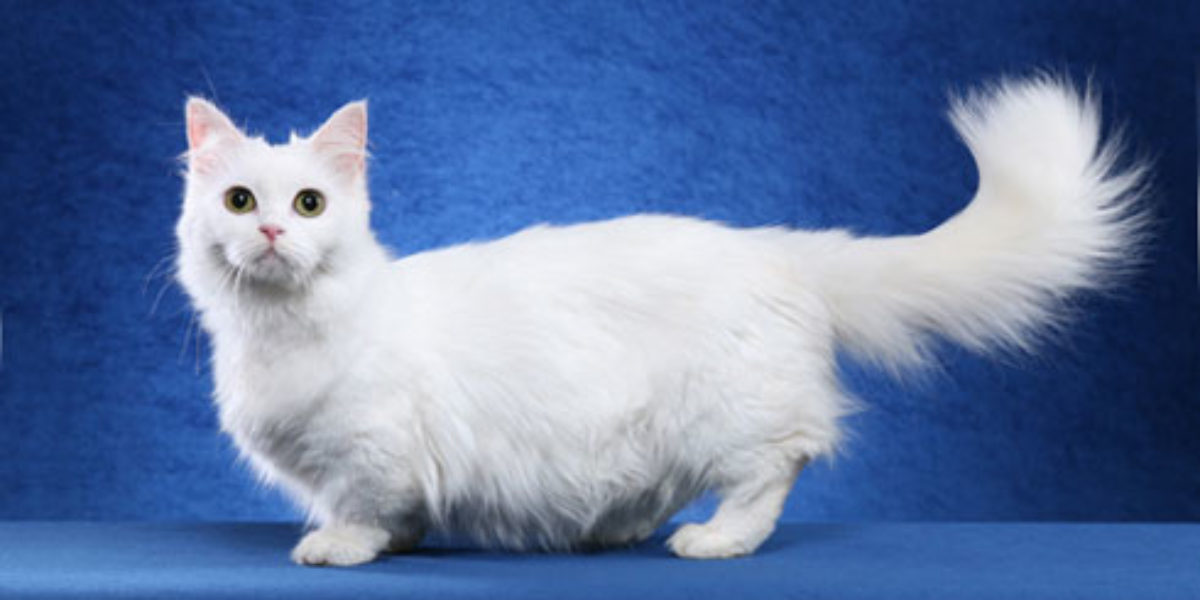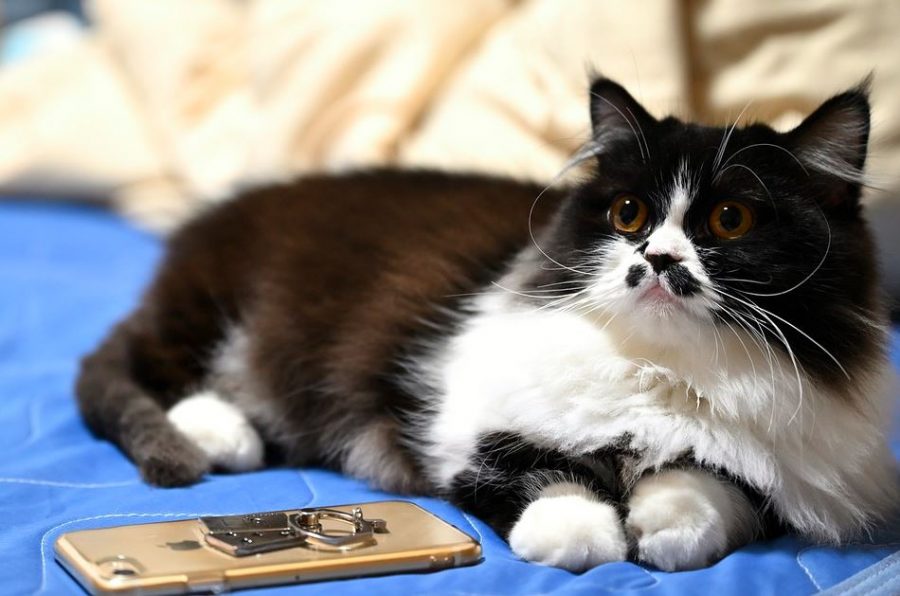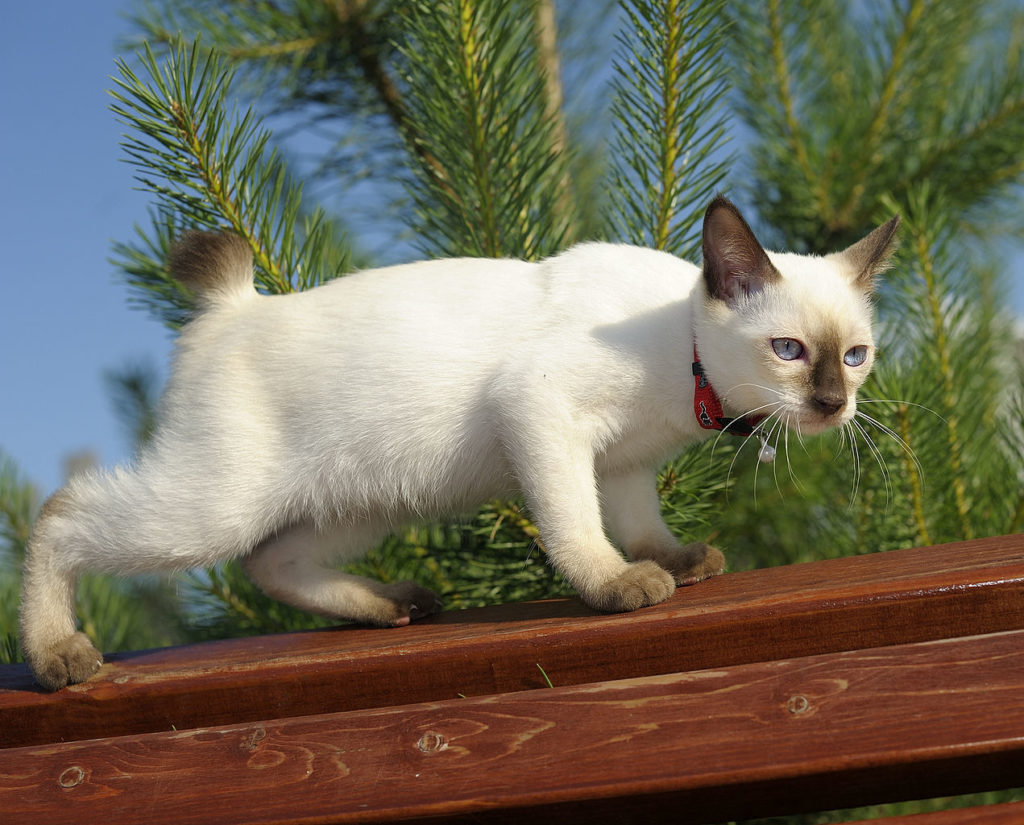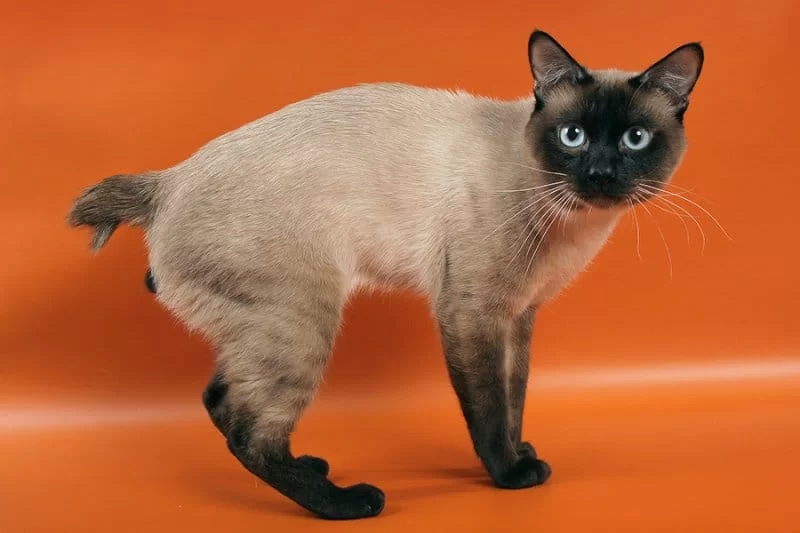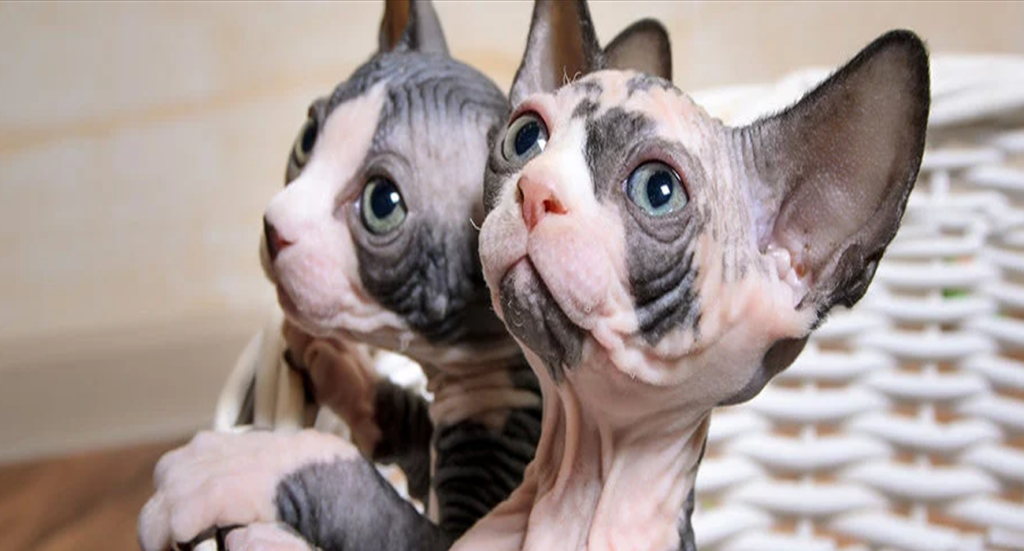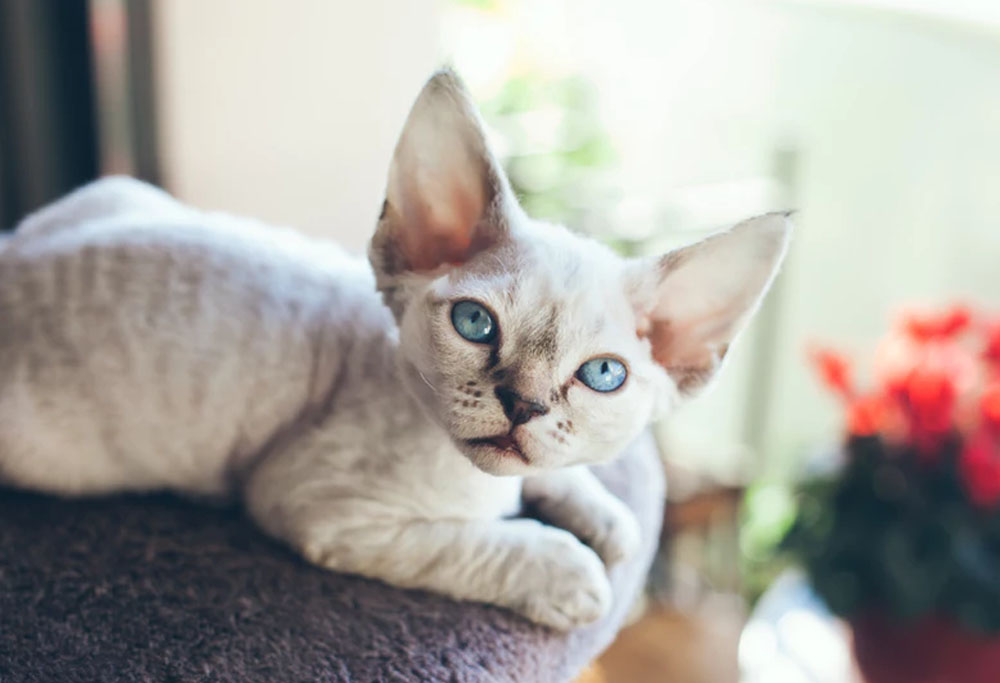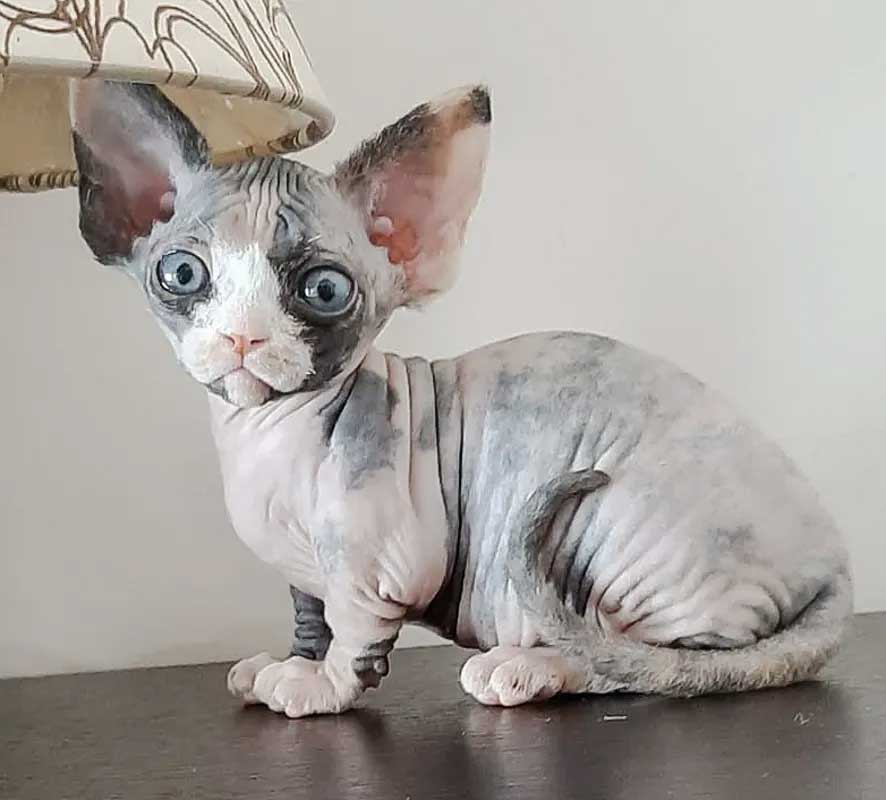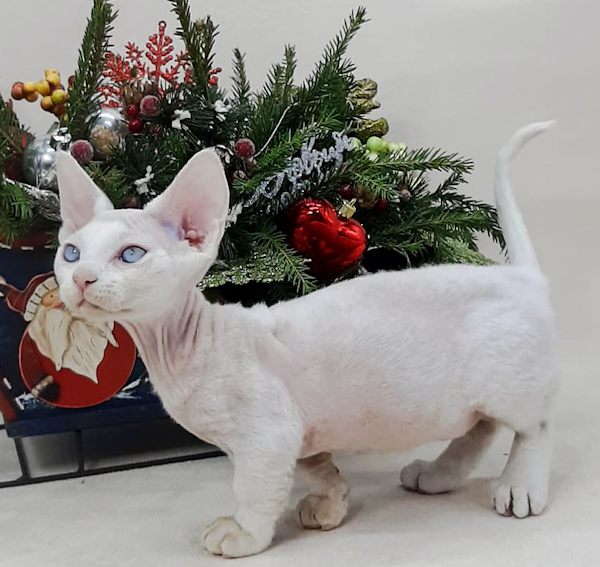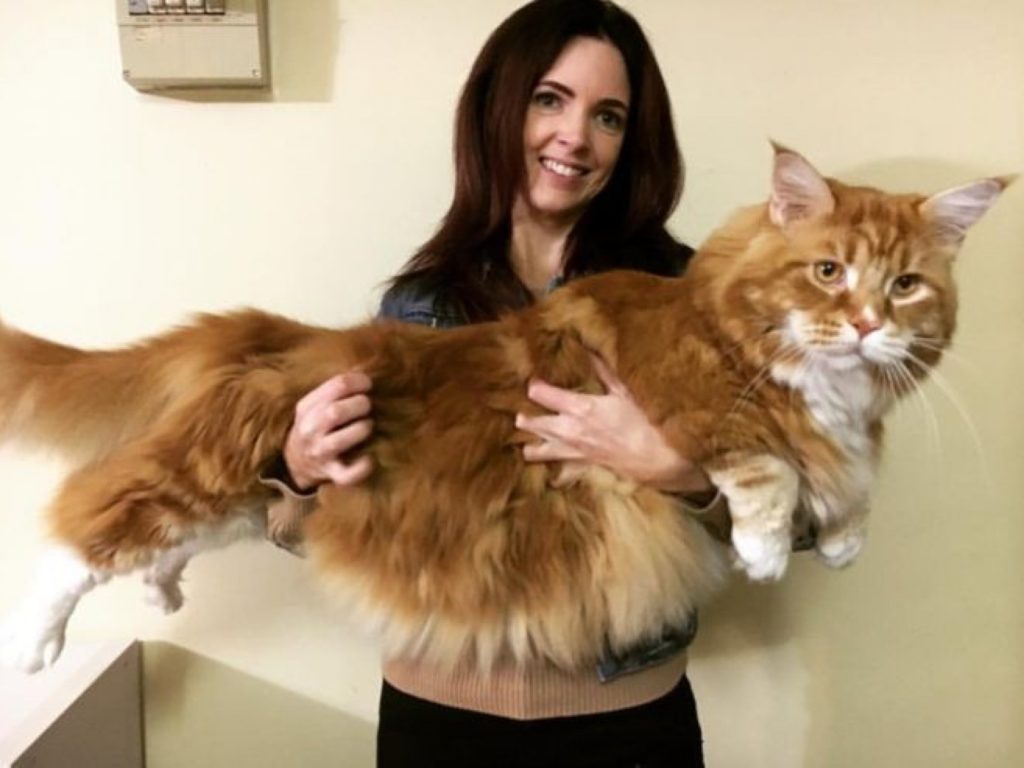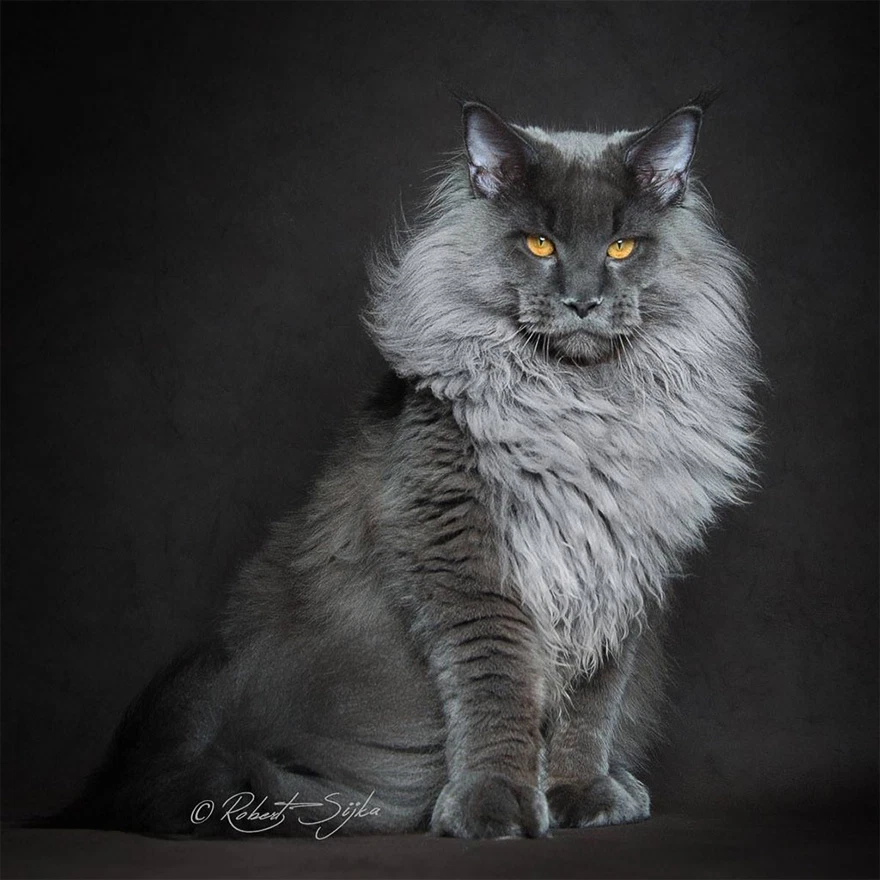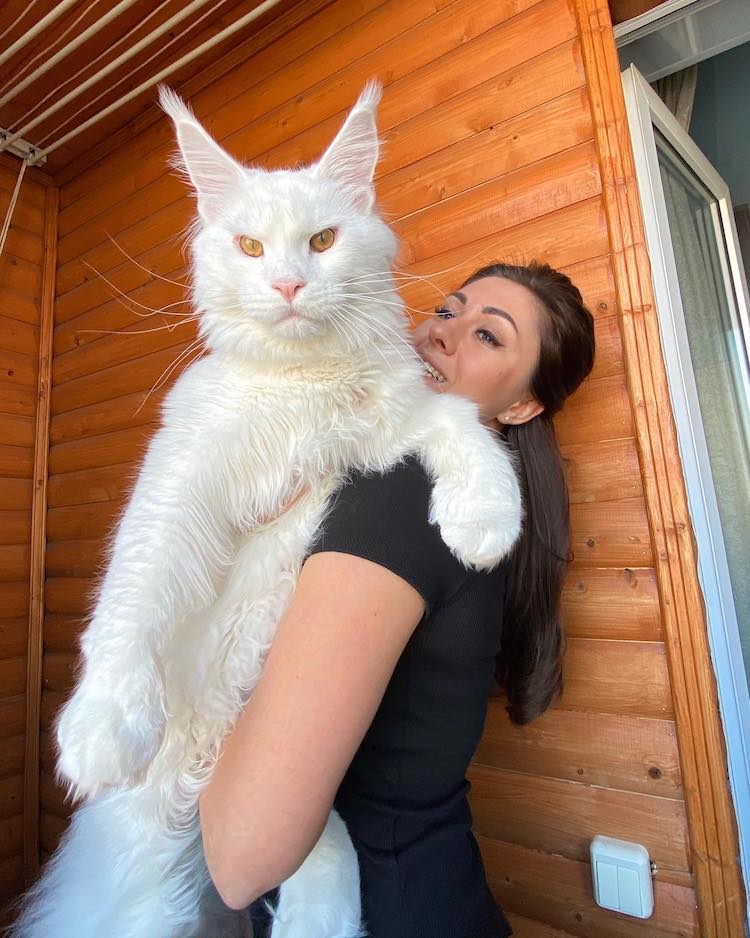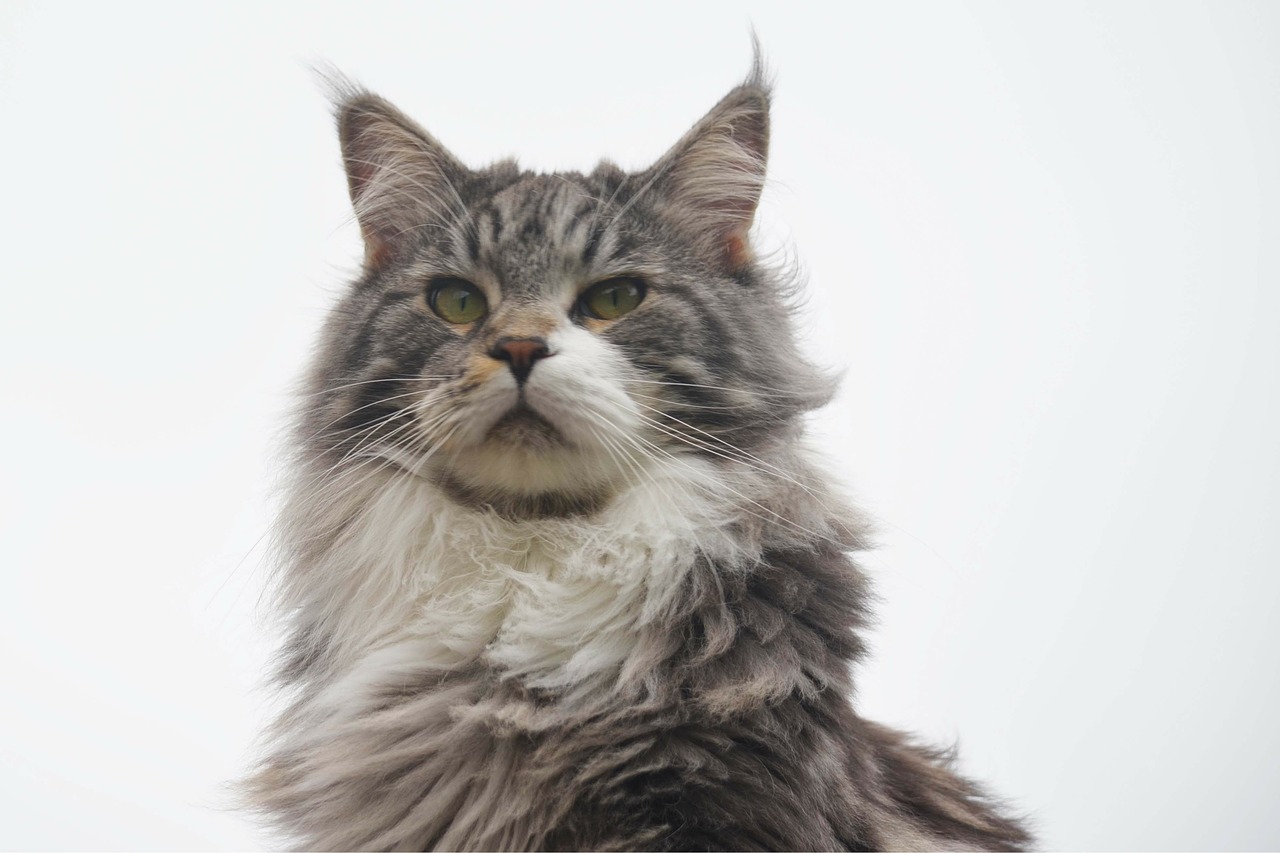The Pixie-Bobs cat breed is claimed to have originated in 1985 when a bobcat and a barn cat had an unintended brood. The very first breed, Pixie, was the product of the breeding of two mythical cats, according to Carol Ann Brewer, the breed’s originator. A legend cat is the result of an American bobcat mating with a domestic cat that occurs naturally. Pixie was the first mother of this breed.
In 1995, the International Cat Association approved the Pixie-bob breed as a native new species and granted championship status in 1997. In 2005, the American Cat Fanciers Association approved the breed. Although the International Cat Association standard mentions the American bobcat’s likeness, the founding committee insists that no captive American bobcats be utilized in any breeding effort.
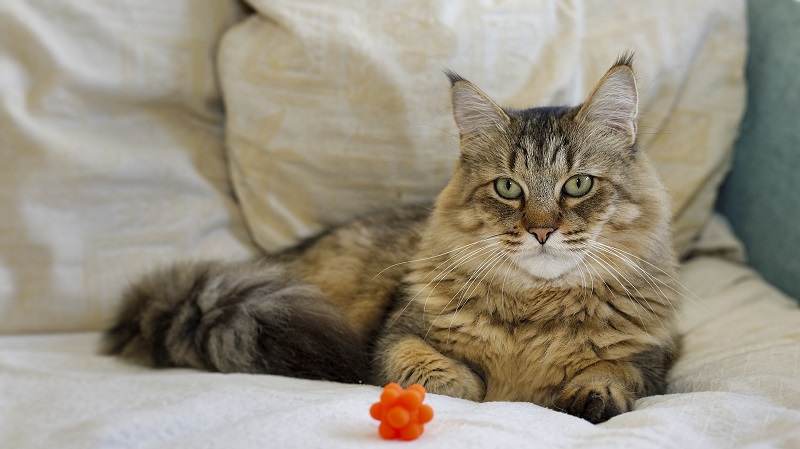
Body Description
Pixie-bobs cats are huge, strong, and resemble bobcats. They have a medium-wide, inverted pear-shaped face with lynx-tipped ears on some of them. Their tails are naturally bobbed, as the name implies. They have golden brown or gooseberry green eyes. They have a strong, rangy body with a wooly coat that stands up from the body, similar to bobcats. They have a characteristic spotting pattern that ranges from pale tan to rusty in hue (reddish-brown or rusty). With a maximum of seven toes per paw, the Pixie-bob is one of the rare breeds that allows polydactyl toes in the breed standard.
Black fur and skin cover the bottoms of Pixie-bobs’ paws, as well as their chins, lips, and eyes. Both males and females can reach a height of 12–13 inches, while larger males have been reported on occasion. Pixie-bobs are muscular and thick-set cats, with males weighing up to 25 pounds. The coats of these cats can be short or long, but they are always double-coated with thick, wooly hair that is coarse to the touch. The coats are tabby and have a pattern similar to that of a North American bobcat, but they can be any color, with fawn, orange, or light gray being the most common.
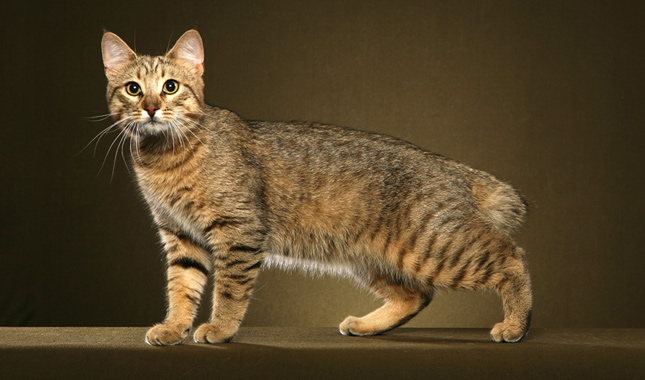
Behavior
Pixie-bobs cat is a kind, easygoing creature. They are intelligent and will want to play with you and be your companion. Traditional meows are rarely heard from them. Pixie-Bobs enjoy being with their owners, but they aren’t hyperactive by any sense of the imagination. These cats enjoy hanging out with the family in a relaxed atmosphere. Pixie-Bobs’ capacity to bond with humans, as well as their calm demeanor, make them wonderful children’s friends. The breed gets along well with other cats, and dogs can be introduced gradually. Pixie-bobs cat have a reputation for being tough travel companions.
Caring
Because Pixie-bobs cat is a large, heavy cat, make sure they have plenty of space to run around and burn off some energy. These cats are energetic but not hyper, so expect some lively play sessions in the near future. To keep your pixie-bobs cat active and mentally stimulated, provide plenty of interactive cat toys and spend time playing with them.
Basic grooming is required, including weekly combing or brushing. To avoid matting and excessive shedding, Pixie-Bobs cat has a thick double coat that must be brushed on a regular basis. The texture resembles that of a bobcat, and it can be short-haired or long-haired. Maintain your cat’s claws and give a scratching post. Brush your cat’s teeth on a regular basis to help maintain healthy dental hygiene.
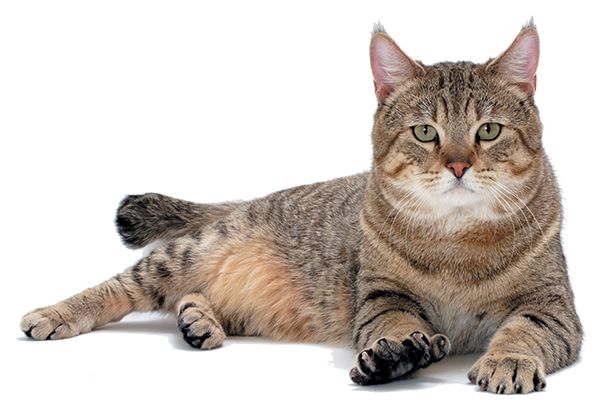
Health
Pixie bobs cat are constantly out-crossed to provide biological variation, and they do not appear to suffer from inbreeding-related health concerns. They are susceptible to the same illnesses and infections as domestic cats. Hypertrophic cardiomyopathy (hardening of the heart muscle), Cryptorchidism, heart disease, and kidney problems are the most prevalent health problems in cats. They have a 15-year average lifespan.
RECOMMENDED ARTICLES
- Peterbald Cat- Body Characteristics, Behaviour Caring And Health
- Tumors In Cats – Causes, 10 Basic Symptoms, And Treatment
- Persian Cat Breed – 3 Complete Body Characteristics, Behaviour And Health
- Antifreeze In Cats – 12 Exclusive Symptoms, Causes, And Treatment
- Heartworms in Cats -10 Exclusive Signs and Symptoms And Treatment
If you like, share it. Sharing is usually caring

